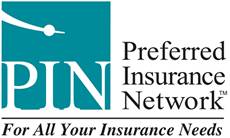When you think about insurance agencies, it’s not just about policies and premiums. Have you ever wondered how they determine the risks involved in insuring you? What factors come into play when calculating your premiums? And how do agents fit into the whole equation? Understanding the inner workings of insurance agencies goes beyond the surface – it’s a complex web of assessments, calculations, and strategies that shape the way they operate in the ever-evolving landscape of risk management.
Key Takeaways
- Risk assessment evaluates claim likelihood and costs.
- Premium calculation considers various factors for pricing.
- Policy underwriting assesses applicant risk levels.
- Agents earn commissions based on premiums sold.
- Customer acquisition involves marketing and partnerships.
Risk Assessment
When it comes to insurance agencies, one of the key processes they undertake is risk assessment. This crucial step involves evaluating various factors to determine the likelihood of a claim being made and the potential cost of that claim.
Insurance agents carefully analyze information such as the client’s history, the type of coverage needed, and external risk factors that could impact the policy. By assessing these risks, insurance agencies can accurately price premiums and ensure they’ve adequate funds to cover potential claims.
It’s a meticulous process that requires attention to detail and a thorough understanding of the insurance industry. Without proper risk assessment, insurance agencies may struggle to provide effective coverage to their clients.
Premium Calculation
To determine the cost of insurance coverage, insurance agencies engage in the process of premium calculation. This involves evaluating various factors such as the insured individual’s age, gender, occupation, health status, and lifestyle habits.
Additionally, the type and amount of coverage required, as well as the level of risk associated with insuring the individual or property, are taken into account. Insurance companies utilize complex algorithms and statistical data to determine the likelihood of a claim being filed and the potential cost of that claim.
Policy Underwriting
Policy underwriting is a critical process in the insurance industry that involves assessing the level of risk associated with insuring a potential policyholder.
During this stage, insurance agencies evaluate various factors such as the applicant’s age, health status, occupation, and past insurance claims history to determine the likelihood of a claim being made.
Based on this assessment, the agency decides whether to accept the risk, adjust the policy terms, or decline coverage altogether.
The underwriting process is crucial for maintaining a balance between offering competitive insurance products and managing the financial stability of the agency.
Agent Commission Structure
The agent commission structure is a fundamental aspect of how insurance agencies operate. Agents receive a commission as a percentage of the premium for each policy they sell or renew. This incentivizes agents to actively seek out new clients and provide excellent customer service to retain existing ones.
Commission rates can vary depending on the type of insurance and the insurance company. For example, agents may earn a higher commission for selling certain types of insurance like life or health insurance. Additionally, some insurance companies offer bonuses or higher commission rates for meeting or exceeding specific sales targets.
Understanding the commission structure is crucial for agents to maximize their earnings and build a successful career in the insurance industry.
Customer Acquisition
When acquiring new customers, insurance agencies employ various strategies to attract individuals or businesses looking for coverage.
These strategies often include targeted marketing campaigns, partnerships with other businesses, and leveraging online platforms to reach a wider audience. Agents may also attend networking events, offer educational seminars, or provide free consultations to showcase their expertise and build trust with potential clients.
Additionally, agencies utilize customer referrals and word-of-mouth marketing to expand their client base. By understanding the unique needs of each customer and offering tailored insurance solutions, agencies can effectively acquire new clients and establish long-lasting relationships built on trust and reliability.
Customer acquisition is a crucial aspect of the insurance business, ensuring continued growth and success.
Claims Processing
After successfully acquiring new customers, the next critical step in the insurance process is claims processing. This is where the insurance agency assesses and manages claims made by policyholders.
Here’s how the claims processing typically works:
- Claim Submission: Policyholders submit their claims to the insurance agency for review.
- Claim Evaluation: The agency evaluates the claim to determine coverage and validity.
- Claim Settlement: If the claim is approved, the agency settles the claim by providing the agreed-upon compensation to the policyholder promptly.
Efficient claims processing is vital for maintaining customer satisfaction and upholding the promise of financial protection that insurance offers.
Reinsurance Strategies
How do insurance agencies mitigate risks and manage their financial stability in the face of large claims and unforeseen events? One key strategy is through reinsurance.
By transferring a portion of their risk to reinsurance companies, insurance agencies can protect themselves against catastrophic losses. This allows them to continue operating smoothly even in the event of significant claims.
Reinsurance helps spread the risk across multiple entities, reducing the financial impact on any single insurer. Additionally, reinsurance provides insurance agencies with access to expertise and resources that can help them better understand and manage risks.
Regulatory Compliance
To operate legally and maintain trust with policyholders, insurance agencies must adhere to regulatory standards set by governing bodies. Compliance is crucial to ensure fair practices, protect consumers, and uphold the integrity of the insurance industry.
Here are key aspects of regulatory compliance for insurance agencies:
- Licensing Requirements: Agents and brokers must obtain proper licenses to sell insurance in each state.
- Consumer Protection Laws: Agencies must follow regulations that safeguard policyholders from unfair practices.
- Financial Solvency Rules: Insurance companies must demonstrate financial stability to meet their obligations to policyholders.
Digital Transformation
As insurance agencies navigate the realm of regulatory compliance, embracing digital transformation becomes a strategic imperative in today’s tech-driven landscape.
Transitioning to digital platforms allows for streamlined processes, enhanced customer experiences, and improved operational efficiency. By implementing digital tools like customer relationship management (CRM) systems, online policy management portals, and automated underwriting processes, insurance agencies can optimize their workflows and stay competitive in the digital age.
Moreover, digital transformation enables agencies to leverage data analytics for better risk assessment, personalized pricing models, and targeted marketing strategies.
Embracing technology not only modernizes traditional insurance practices but also fosters innovation, agility, and adaptability in a rapidly evolving industry landscape.
Industry Trends
Navigating the dynamic landscape of the insurance industry requires a keen eye on emerging trends.
Stay ahead of the curve by keeping an eye on the following industry trends:
- Personalized Policies: Tailoring insurance offerings to individual needs through data analytics and AI.
- Insurtech Integration: Embracing technology to streamline processes, enhance customer experiences, and improve operational efficiency.
- Cybersecurity Focus: Addressing the growing threat of cyber risks by offering specialized insurance products and investing in robust security measures.
Frequently Asked Questions
Can Insurance Agencies Guarantee a Specific Premium Rate?
Insurance agencies cannot guarantee a specific premium rate due to various factors like market changes and individual risk assessments. They strive to provide competitive rates but cannot promise fixed premiums over time.
How Do Insurance Agencies Handle Policy Cancellations?
When policy cancellations occur, insurance agencies review the reasons and process the request. They may refund a portion of your premium if applicable. Remember to communicate with your agency promptly to ensure a smooth cancellation process.
Are Insurance Agencies Responsible for Investigating Fraud?
Insurance agencies are responsible for investigating fraud to protect policyholders and maintain the integrity of the insurance system. They actively monitor claims, gather evidence, and work with authorities to combat fraudulent activities.
Do Insurance Agencies Offer Discounts for Multiple Policies?
Yes, insurance agencies often offer discounts for multiple policies. When you bundle your home and auto insurance, for example, you can usually enjoy savings on both premiums. It’s a common way to save money.
What Happens if the Insurance Agency Goes Out of Business?
If the insurance agency goes out of business, you may lose coverage. Seek a new provider promptly to protect your assets. Contact regulatory agencies for guidance and possible reimbursement if applicable. Stay informed.
Conclusion
In conclusion, insurance agencies work by assessing risk, calculating premiums, underwriting policies, earning commissions, acquiring customers, implementing reinsurance strategies, ensuring regulatory compliance, and adapting to digital transformation. By staying informed about industry trends and maintaining financial stability, insurance agencies can effectively protect their clients and mitigate risks. Trust in the insurance industry relies on transparency, prompt claim processing, and a commitment to providing reliable coverage to policyholders.

